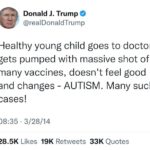The FDA approval of Moderna’s mNEXSPIKE COVID-19 vaccine, announced on May 31, 2025, was based on a benefit-risk assessment specifically for adults aged 65 and older and individuals aged 12 to 64 with at least one underlying risk factor for severe COVID-19, as defined by the CDC. Below are the key benefits that were determined to outweigh the risks, based on available data:
Benefits of mNEXSPIKE
- Enhanced Efficacy Against COVID-19:
- In a Phase 3 trial with approximately 11,400 participants, mNEXSPIKE demonstrated 9.3% higher relative efficacy compared to Moderna’s original vaccine, Spikevax, in people aged 12 and older, and 13.5% higher efficacy in those 65 and older.
- The vaccine is designed to target currently circulating variants of SARS-CoV-2, providing improved protection against severe disease, hospitalization, and death, which remain significant risks for high-risk groups.
- Protection for Vulnerable Populations:
- The approval targets adults 65 and older and those aged 12 to 64 with conditions like diabetes, chronic obstructive pulmonary disease (COPD), or obesity, where the risk of severe COVID-19 is elevated. This focus addresses the ongoing public health threat, with over 47,000 Americans dying from the virus last year alone.
- Lower Dose, Refined Immune Target:
- mNEXSPIKE uses a lower dose—only a fifth of the dose of Spikevax—by refining its immune target, potentially reducing side effects while maintaining or improving efficacy. This advancement represents a step toward next-generation coronavirus vaccines.
- Public Health Impact:
- By offering an additional tool to protect high-risk individuals, mNEXSPIKE helps reduce the burden of severe COVID-19 outcomes, supporting healthcare systems and mitigating mortality risks in vulnerable groups.
Risks of mNEXSPIKE
- Side Effects:
- Common side effects include injection site pain, fatigue, headache, and myalgia, similar to those seen with Spikevax and other mRNA vaccines. These are generally mild to moderate and temporary.
- In the Phase 3 trial, 2.7% of participants (about 308 of 11,400) experienced serious adverse events, but none were directly linked to the vaccine based on FDA and Moderna’s analyses. Specific details on these events, such as hospitalizations, were not fully detailed in public reports.
- Limited Data:
- The trial lacked a placebo group, raising questions about absolute effectiveness compared to relative efficacy against Spikevax. This limits the ability to fully quantify benefits in a vacuum.
- Long-term safety data is still being collected, with post-marketing studies, including one on pregnant individuals and their babies, required by the FDA to be submitted by 2032.
- Restricted Use:
- The FDA limited approval to high-risk groups, reflecting caution about broader use, possibly due to evolving regulatory scrutiny and skepticism about vaccine necessity for lower-risk populations.
Why Benefits Outweigh Risks
The FDA’s determination that the benefits of mNEXSPIKE outweigh its risks for the approved groups rests on:
- Higher Efficacy: The 9.3% to 13.5% improvement in efficacy over Spikevax, particularly for older adults, directly addresses the elevated risk of severe outcomes in these populations.
- Targeted Protection: COVID-19 continues to pose a serious threat, with significant mortality in high-risk groups, making enhanced protection critical. The vaccine’s design aligns with current variants, increasing its relevance.
- Tolerable Safety Profile: Side effects are consistent with prior mRNA vaccines, and no serious adverse events were conclusively tied to mNEXSPIKE in trials. Hundreds of millions of mRNA vaccine doses have been administered in the U.S., with benefits historically outweighing risks.
- Regulatory Rigor: The FDA’s approval followed a thorough review of manufacturing, nonclinical, and clinical data, ensuring the vaccine meets statutory criteria for safety and effectiveness in the specified groups.
Context and Limitations
The FDA’s restriction to adults 65+ and those 12-64 with risk factors reflects a cautious approach, influenced by evolving policies and skepticism from figures like Health Secretary Robert F. Kennedy Jr. For these high-risk groups, the potential to prevent severe illness and death is deemed to outweigh the largely manageable risks. However, the lack of a placebo group and incomplete long-term data mean ongoing studies will be critical to confirm these findings.














